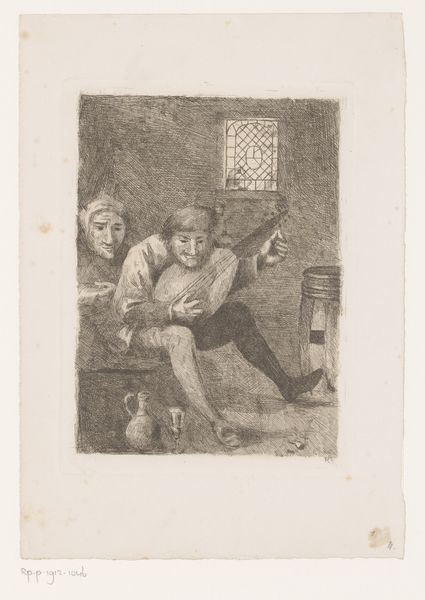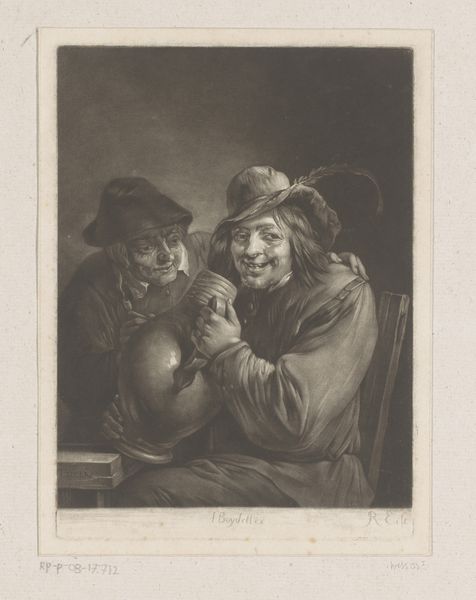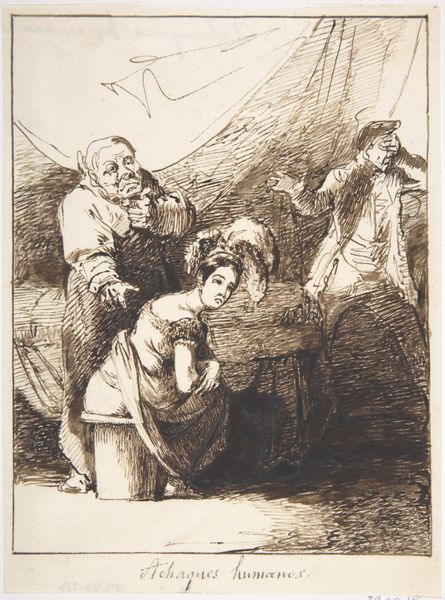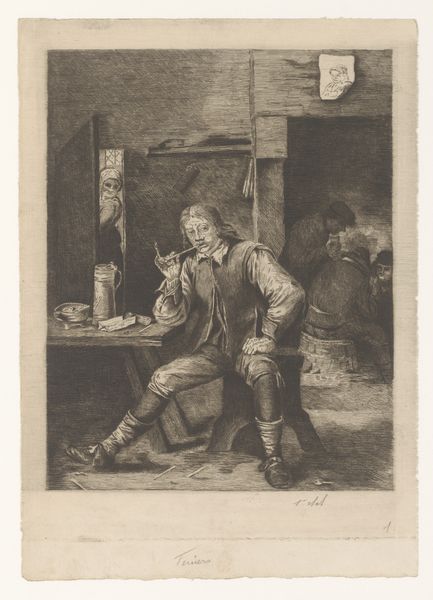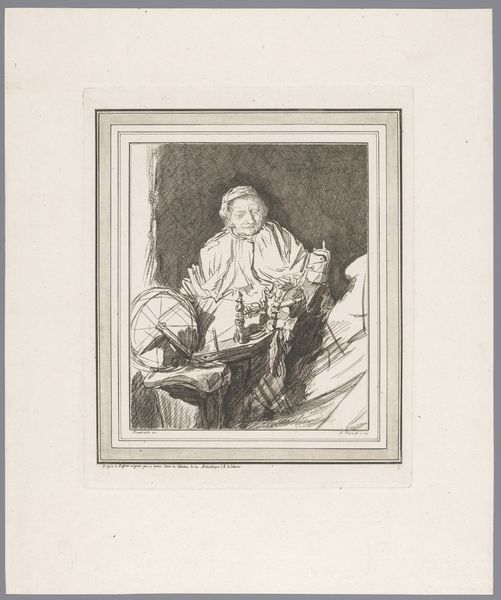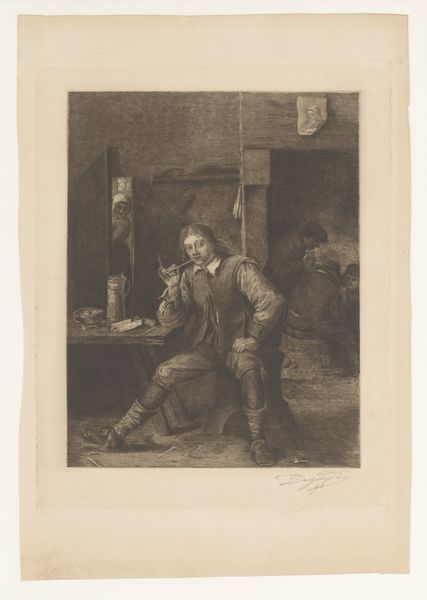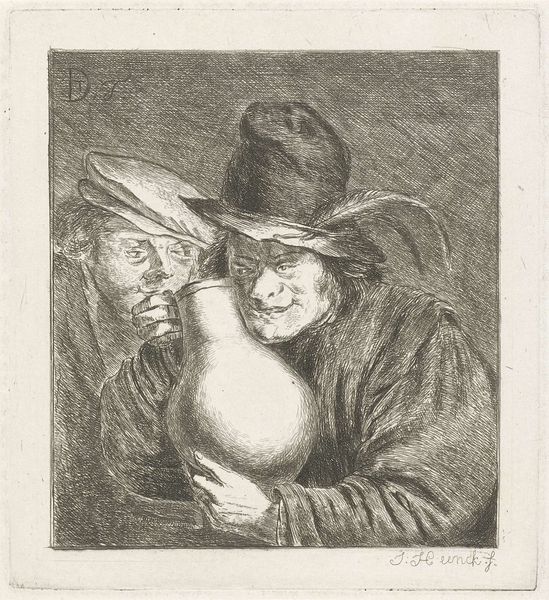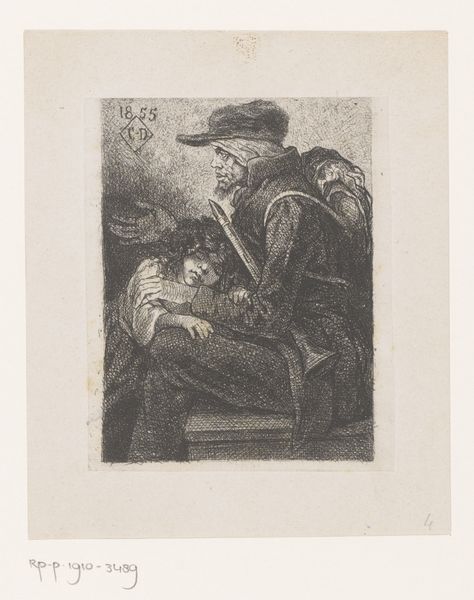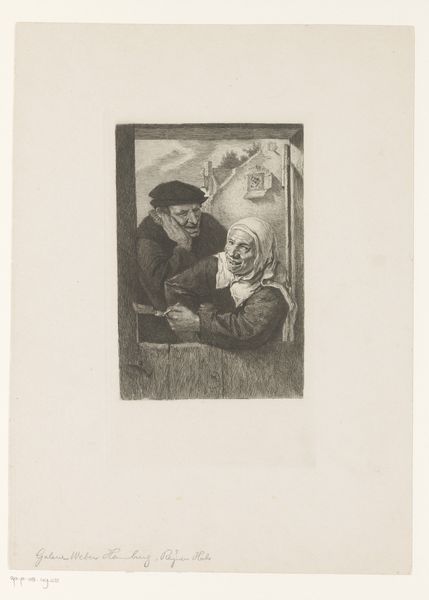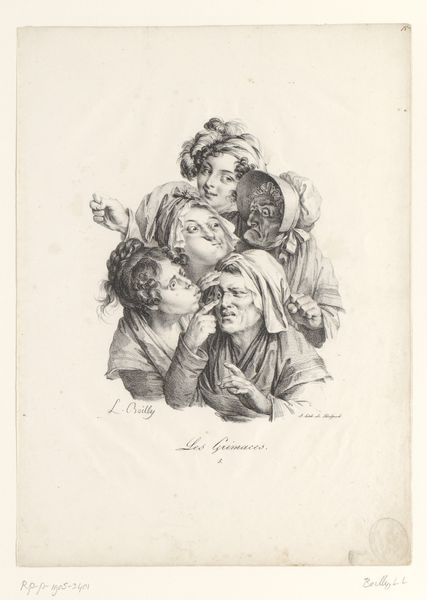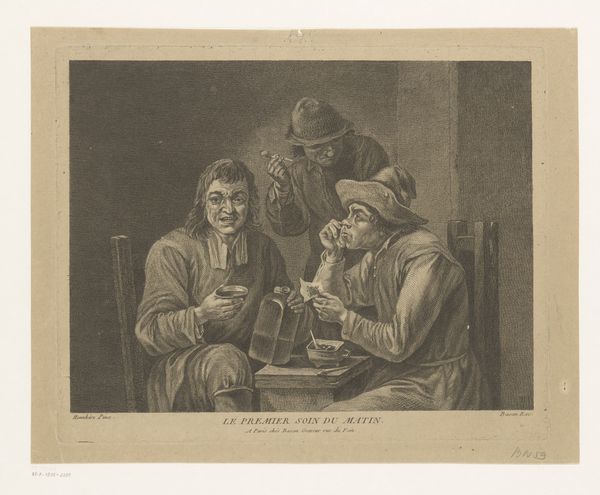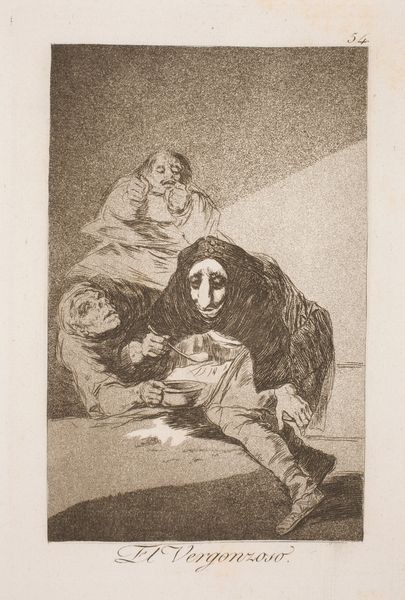
Dimensions: height 150 mm, width 113 mm
Copyright: Rijks Museum: Open Domain
Curator: Here we have "Two Drinking Farmers," an engraving by Charles Corbutt, likely created between 1745 and 1794. Editor: The first thing that strikes me is the contrast in textures, from the almost leathery face of the seated farmer to the softer cap and shadows defining the other. It evokes a particular mood, like a candid tavern scene frozen in time. Curator: Indeed. This engraving is part of a broader visual culture that romanticized and also caricatured rural life. These genre scenes gained popularity with the rising middle class in the 18th century, offering them a glimpse—or a constructed idea—of rural society. Notice how their clothes aren't ragged, there's a calculated tidiness, an effort to appear acceptable. Editor: But observe how Corbutt uses light and shadow, even within the limited palette of the engraving, to emphasize the almost theatrical expressions of the figures. The farmer in front with the jug seems rather drunk. The artist uses a very linear style, cross-hatching to build up shadows and volumes. Curator: It's intriguing to think about the role these images played in shaping public perceptions. Were they meant to be amusing, cautionary, or even aspirational in some strange way? And, how does the print medium influence this narrative? Editor: Absolutely. The medium dictates the aesthetic choices, as the stark lines of the engraving render the details and textures visible and create a contrast between dark and light to evoke drama in this artwork. I also wonder what the semiotic significance is of the pitcher being clutched. The viewer wonders what secrets it might hide. Curator: Right, these printed images circulated widely and cheaply. It shows that these taverns had more of a public, political, and social purpose as people gathered, to enjoy drinks together and find ways of making themselves feel that they belonged to the same social and cultural group. Editor: I noticed that these contrasting characters remind me how artists can convey psychological depth using a highly economical use of line. These subtle modulations shape the viewing experience through a semiotic approach and invite the observer to reconstruct his thoughts and behavior as well. Curator: I leave with how powerful such simple imagery was in mediating class dynamics, even with a little social commentary thrown in! Editor: A simple form with subtle light changes allows this image to resonate for years!
Comments
No comments
Be the first to comment and join the conversation on the ultimate creative platform.
